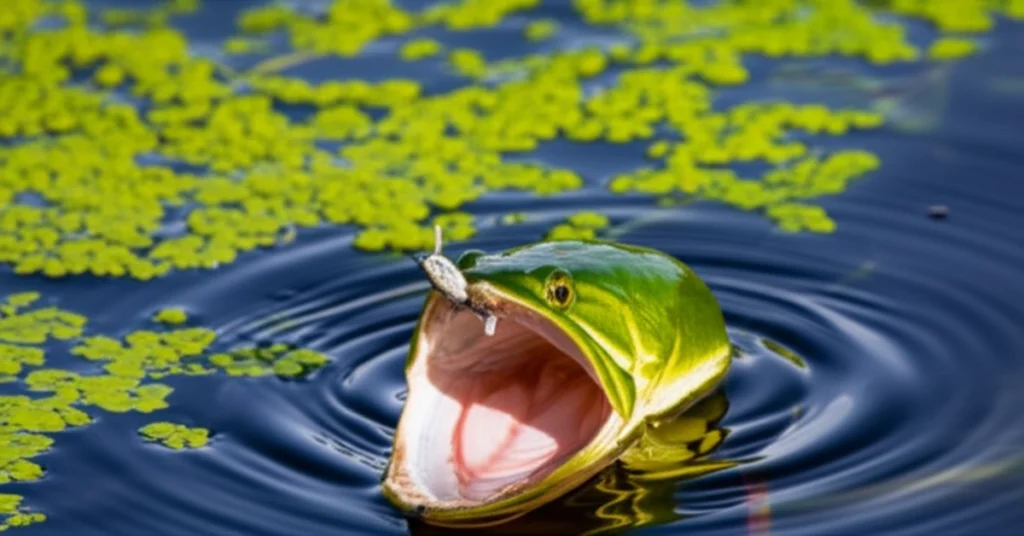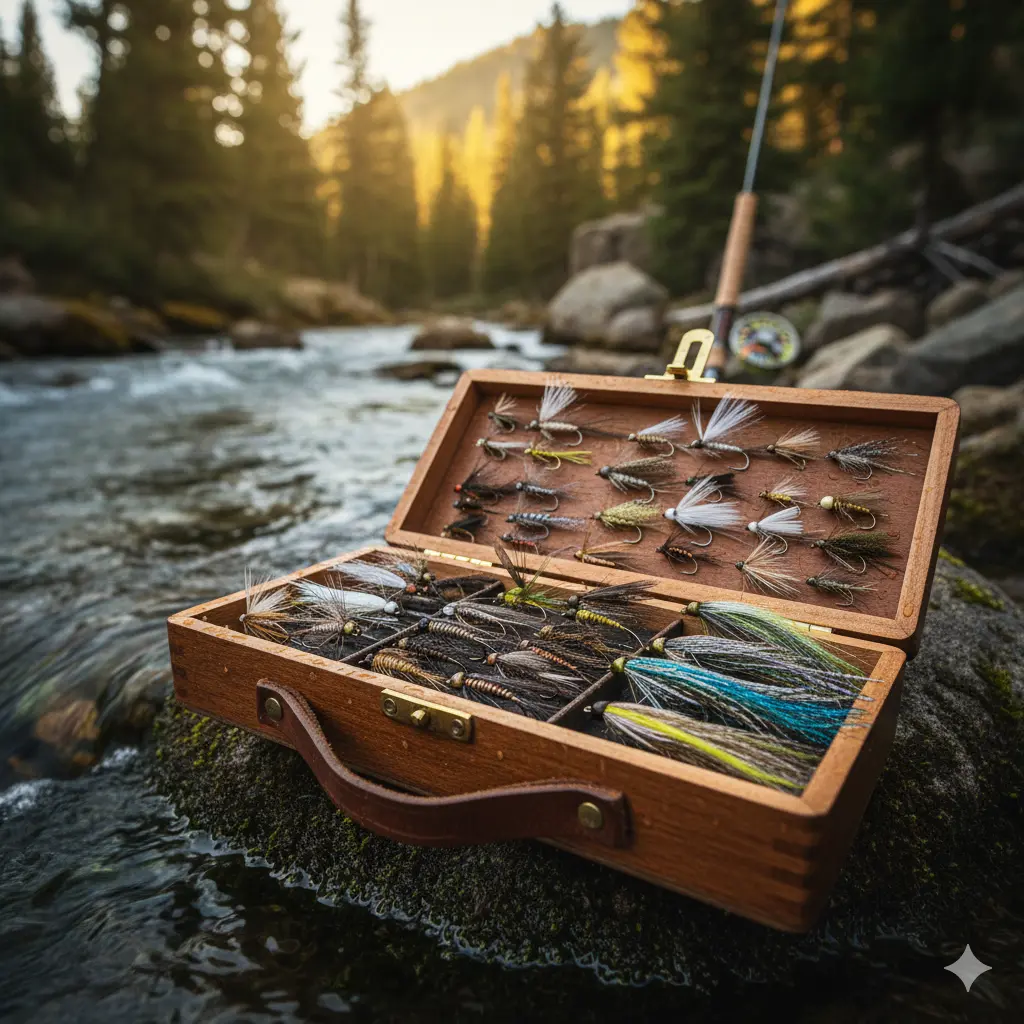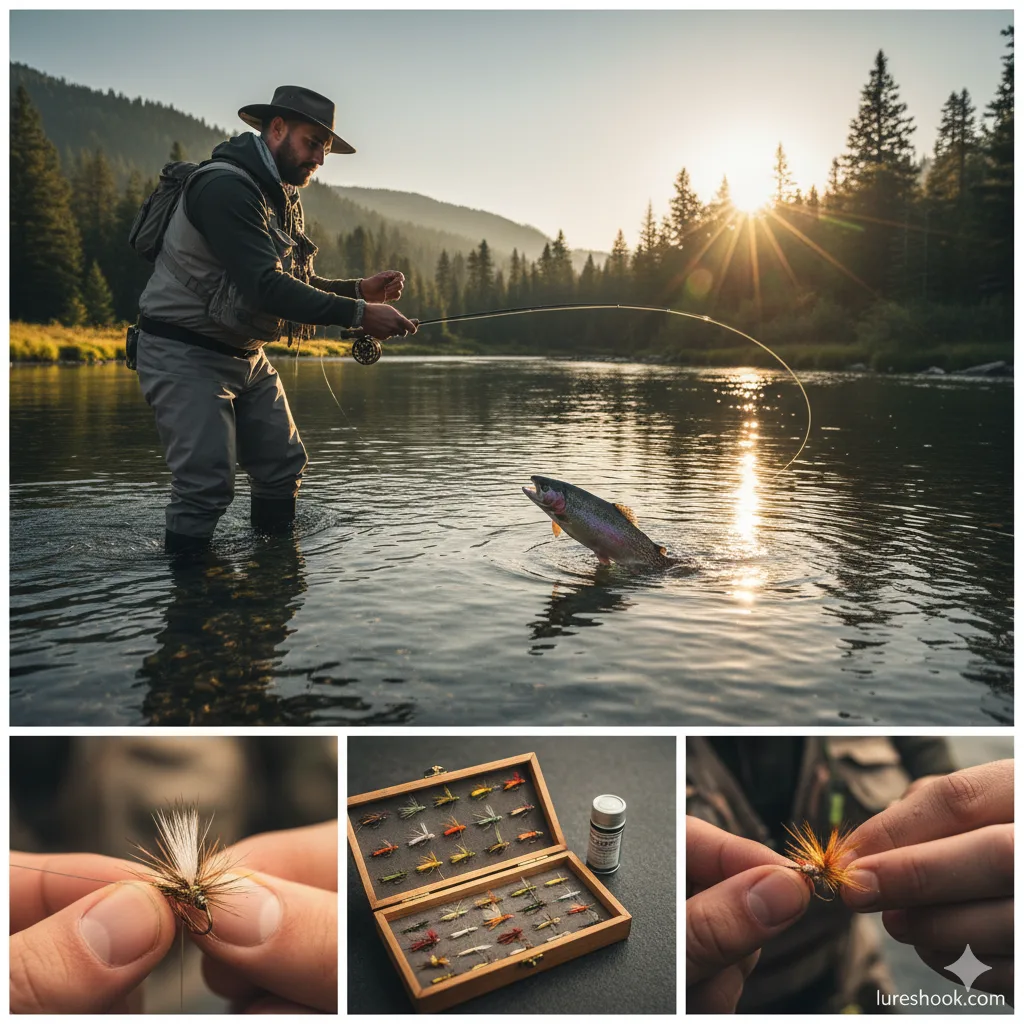Master Frogs Fishing: The Ultimate Angler’s Guide
There is nothing in freshwater angling quite like the heart-stopping explosion of a big bass demolishing a topwater frog. This visual and visceral experience is what makes frogs fishing one of the most exciting ways to catch largemouth bass. However, turning those spectacular blow-ups into landed fish requires a specific set of skills, gear, and knowledge. This comprehensive guide is designed to solve that problem, transforming you from a hopeful angler into a confident frog-fishing expert. We’ll cover everything from gear selection and lure modifications to advanced presentations that fool even the wariest bass.
Whether you’re frustrated by missed hooksets or simply want to add a powerful new weapon to your arsenal, you’ve come to the right place. We will dive deep into the nuances of this technique, ensuring you understand not just the ‘how’ but the ‘why’ behind every cast, twitch, and pause. Get ready to conquer the heavy cover and experience the unparalleled thrill of successful frogs fishing. This is your definitive roadmap to triggering more strikes and boating more trophy-class fish.
Table of Contents
- What is frogs fishing?
- Key Benefits and Importance
- Complete Step-by-Step Guide
- Expert Tips & Best Practices
- Common Mistakes to Avoid
- Advanced Strategies for 2024/2025
- Essential Tools & Resources
- Frequently Asked Questions
What is frogs fishing?
At its core, frogs fishing is a topwater angling technique that uses hollow-bodied or solid-bodied artificial frog lures to target predatory fish, primarily largemouth bass. These lures are designed to be weedless, allowing them to be worked over and through heavy vegetation like lily pads, matted grass, and scum where other lures would snag instantly.
This method is more than just casting and reeling; it’s a complete system that involves specialized gear and a deep understanding of bass behavior. An effective frog guide will always emphasize the importance of matching your lure to the environment. Success depends on mastering various frog fishing techniques, making the right frog selection based on conditions, and understanding how different frog colors and frog sizes impact your results. Proper frog presentations are key to convincing a bass that your lure is a real, vulnerable meal, making frog bass fishing a true art form.
Key Components
- Weedless Lure Design: The hooks on a hollow-body frog face upward and rest against the body, preventing snags and allowing you to fish in the thickest cover imaginable.
- Heavy-Duty Gear: A stout, heavy-power rod and high-speed baitcasting reel spooled with heavy braided line (typically 50-65 lb test) are essential for controlling the lure and pulling big fish out of dense vegetation.
- Targeting Heavy Cover: This technique excels where other lures fail. It’s designed for fishing over matted hydrilla, through dense lily pad fields, and around thick shoreline reeds.
- Patient Hookset: Unlike many other techniques, anglers must wait a crucial 1-2 seconds after a bass strikes the frog before setting the hook, ensuring the fish has fully engulfed the lure.
Why frogs fishing Matters: Key Benefits
The allure of frogs fishing goes far beyond the adrenaline rush of a topwater strike. It is a strategically important technique that unlocks parts of a lake or pond that are inaccessible to 90% of other presentations. This allows anglers to target large, unpressured bass that rarely see a lure.
Accessing Unfishable Water
The primary benefit is the ability to present a bait in the heaviest cover possible. Bass use thick vegetation as an ambush point, for shade, and for oxygen-rich water. A hollow-body frog slides effortlessly over matted grass and pads where a crankbait or spinnerbait would instantly foul. For example, during the summer, when vast fields of hydrilla mat up on the surface, frogs fishing is often the only viable method to reach the giant bass living underneath that canopy.
Triggering Aggressive, Territorial Strikes
Frog lures don’t just imitate a meal; they invade a bass’s personal space, triggering a predatory and territorial response. A bass might not be actively feeding, but the sight of a frog sputtering overhead can provoke a violent reaction strike it can’t resist. This is why frog bass fishing often produces larger-than-average fish; dominant bass are quick to attack intruders in their prime territory.
“The frog isn’t just a lure; it’s a key. It unlocks the door to the thickest, nastiest cover where the biggest bass in the lake live. If you’re not throwing a frog, you’re ignoring the giants.”
Complete Guide to frogs fishing – Step-by-Step
Successfully engaging in frogs fishing requires a systematic approach. From selecting the right gear to executing the perfect retrieve, each step builds upon the last. Follow this process to set yourself up for success on the water.
Step 1: Assemble the Proper Gear
Your equipment is the foundation of successful frog fishing. Using the wrong setup is the number one reason for lost fish. You need power and efficiency to cast accurately and pull bass from heavy cover.
- Rod Selection: Choose a heavy-power, fast-action casting rod between 7′ and 7’6″ in length. This provides the backbone needed for a powerful hookset and control over the fish.
- Reel and Line: A high-speed baitcasting reel (at least 7.1:1 gear ratio) is crucial for quickly picking up slack line before the hookset. Spool it with 50-65 lb braided line; its zero-stretch quality is essential for driving the hooks home, and its strength prevents break-offs in cover.
- Lure Connection: Tie your braid directly to the lure using a strong knot like a Palomar or San Diego Jam. Avoid using a leader or a snap swivel, as they can fail under pressure.
Step 2: Choose the Right Frog
The market is filled with frog lures, but they generally fall into two categories: walking frogs and popping frogs. Your frog selection should be based on the conditions. Reading various frog reviews can also help you find quality brands.
Walking frogs have a pointed nose and are best for ‘walking the dog’ back and forth over matted vegetation or in calmer water. Popping frogs have a cupped mouth that spits water, creating more commotion. They excel in choppy water or when you need to call fish from a distance. Consider different frog sizes; a smaller frog might be better on a high-pressure lake, while a larger one presents a bigger meal.
Step 3: Master Your Frog Presentations
How you work the lure is critical. Effective frog presentations involve varying your retrieve until you find what the fish want on a given day. Start by casting your frog onto the cover, not just to the edge of it. Let it sit for a few seconds before starting your retrieve, as many strikes occur right after the lure lands.
Experiment with different cadences: a steady walk-the-dog action, a series of quick pops followed by a long pause, or slowly dragging it across matted grass. The key is to make the lure look alive and vulnerable. The art of frogs fishing lies in these subtle manipulations.
Expert Tips & Best Practices for frogs fishing
Adhering to best practices can dramatically increase your success rate. These frog tips separate seasoned anglers from beginners and will help you convert more blow-ups into landed fish. The best frog guide is one built on experience.
For Beginners:
- Count to Two: When a bass strikes, resist the urge to immediately set the hook. Take a breath, reel down to remove any slack, and count “one-one thousand, two-one thousand.” Then, swing hard. This pause ensures the bass has fully engulfed the lure.
- Bend the Hooks Out: Many frogs come with hooks that ride very close to the body. Gently bend them slightly upward and outward, away from the body, to increase your hook-up ratio significantly without compromising the weedless design.
- Start with Basic Colors: Don’t get overwhelmed by hundreds of frog colors. Start with three basics: black (for low light/dark water), white or chartreuse (for a baitfish look), and a natural green/brown (for clear water and sunny days).
For Advanced Users:
- Modify Your Frog: Advanced anglers often trim the skirted legs of their frogs. Trimming one leg shorter than the other can make the frog ‘walk’ easier and turn more sharply. Some add a rattle or weight to the body cavity to change the sound and posture in the water.
- The Follow-Up Cast: When a fish blows up on your frog and misses it, immediately cast a follow-up bait like a weightless Senko or fluke to the same spot. The bass is still agitated and will often strike the second, more subtle offering.
5 Common frogs fishing Mistakes to Avoid
Success in frogs fishing often comes down to avoiding a few critical errors. Understanding these common pitfalls will help you troubleshoot problems on the water and keep your line tight.
Mistake #1: Setting the Hook Prematurely
The Problem: The explosive nature of the strike causes a panic reaction, leading anglers to pull the lure away from the fish before it has a firm grip.
The Solution: Train yourself to wait. Do not react to the sight of the strike; react to the weight of the fish on your line. Reel down until you feel pressure, then set the hook with a powerful upward sweep of the rod.
Mistake #2: Using Inadequate Gear
The Problem: A medium-power rod, monofilament line, or a slow reel simply cannot handle the demands of frog fishing. This results in poor hooksets, broken lines, and lost fish in heavy cover.
The Solution: Invest in the proper setup. A heavy-power rod, a high-speed reel, and at least 50 lb braided line are non-negotiable for this technique.
Mistake #3: Sticking to One Retrieve Speed
The Problem: Anglers fall into a rut, working the frog the same way on every cast. Bass are moody, and their preferred retrieve speed and cadence can change by the hour.
The Solution: Constantly experiment with your frog presentations. Try fast, aggressive pops and then switch to a slow, methodical twitch-twitch-pause retrieve until you get a strike. Let the fish tell you what they want.
Mistake #4: Ignoring Obvious Targets
The Problem: It’s easy to get mesmerized by a huge lily pad field and forget the high-percentage targets within it. Anglers often cast randomly instead of strategically.
The Solution: Dissect the cover. Look for isolated clumps of grass, points in the weed line, logs mixed in the pads, or openings in the mat. These ‘irregularities’ are where bass set up ambushes.
Mistake #5: Neglecting Lure Color
The Problem: Thinking color doesn’t matter for a topwater lure. While action is key, the right color can be the difference between a curious look and a committed strike.
The Solution: Follow a simple rule for frog colors. Use dark colors (black, blue) in low light or stained water for a better silhouette. Use natural colors (green, brown) in clear water and sunny conditions. Use bright colors (white, chartreuse) to imitate baitfish in open water patches.
Advanced frogs fishing Strategies for 2024/2025
As bass become more pressured, anglers must adapt. These cutting-edge approaches to frogs fishing will give you an edge and help you catch fish that others miss. These advanced frog fishing techniques are game-changers.
Skipping Frogs Under Docks and Overhangs
Most anglers see docks as targets for jigs or Texas rigs, but the shade they provide is a magnet for big bass. Mastering the art of skipping a hollow-body frog far under a low-hanging dock or overhanging tree is a deadly tactic. The frog’s soft body and shape make it an excellent skipping lure. This allows you to present a topwater bait in shady areas where bass feel secure and are rarely challenged from above.
Using a Frog in Open Water
While frogs are known for heavy cover, they can be incredibly effective in open water, especially around schooling baitfish. When bass are chasing shad near the surface, a walking-style frog can be worked much more aggressively than a traditional walking bait. Its weedless nature also means you can work it over submerged brush piles or grass that might snag a treble-hooked lure. This unconventional approach to frogs fishing can be highly productive.
Essential Tools & Resources for frogs fishing
Having the right tools at hand can make your time on the water more efficient and successful. These items, along with quality information, will round out your frogs fishing arsenal.
Recommended Tools:
- Braid-Cutting Scissors: A high-quality pair of scissors designed specifically for cutting braided line is a must. They provide a clean cut every time, making re-tying quick and easy.
- Needle-Nose Pliers: Essential for safely and quickly removing the large, thick-wire hooks of a frog from a bass’s mouth, minimizing harm to the fish.
- Lure Retriever: Even with heavy line, a frog can get snagged on a submerged log or dock post. A pole-based lure retriever can save you from losing your favorite $10 frog.
Additional Resources:
- Frog Reviews on YouTube: Channels dedicated to tackle reviews offer invaluable insights into how different frogs perform on the water, helping with your frog selection.
- Online Fishing Forums: Websites and forums dedicated to bass fishing are a great place to ask questions and learn specific frog tips from a community of experienced anglers.
Frequently Asked Questions About frogs fishing
Q1: What are the best conditions for frogs fishing and using specific frog fishing techniques?
Answer: The ideal conditions for frogs fishing are typically warm water (above 65°F), overcast skies, and calm winds. However, frogs can be effective in a wide range of situations. They excel in the summer and early fall when vegetation is thickest. Don’t overlook them on sunny days; bass will use matted vegetation as a sun shield, making them prime targets. Certain frog fishing techniques, like using a popping frog, can be more effective on windy days to create extra commotion.
Q2: How important really are frog colors and frog sizes?
Answer: They are very important. For frog sizes, the general rule is to match the size of the local forage. If the lake is full of large bullfrogs, a bigger frog works well. In high-pressure situations or when targeting smaller fish, downsizing can get you more bites. For frog colors, the key is visibility and profile. In muddy water or low light, a solid black frog provides the strongest silhouette for bass to see from below. In clear water, a more natural green or brown is less intimidating.
Q3: Why do I need such a heavy rod for frogs fishing?
Answer: A heavy rod serves two critical purposes in frog bass fishing. First, a frog’s hooks are thick and require a tremendous amount of force to penetrate a bass’s tough mouth, especially on a long cast with zero-stretch braid. Second, once you hook a bass in lily pads or thick grass, you need the sheer power and backbone of a heavy rod to horse the fish out of the cover before it can wrap you up and break you off.
Q4: What is the single most important frog tip for a beginner?
Answer: Without a doubt, the most crucial of all frog tips is learning to pause before the hookset. Your natural reflex will be to jerk as soon as you see the water explode. You must override that instinct. Burn this into your memory: see the strike, reel down to feel the weight of the fish, and only then set the hook. Mastering this one skill will double your catch rate with a frog overnight. This is the cornerstone of every good frog guide.
Conclusion: Master frogs fishing for Long-term Success
Mastering the art of frogs fishing is a journey, but it is one of the most rewarding pursuits in all of angling. By combining the right gear with a deep understanding of lure selection and presentation, you can consistently catch bigger, more aggressive bass from areas others can’t even fish. Remember the core principles: use heavy gear, be patient on the hookset, and let the fish tell you which retrieve they want.
As you move forward, continue to experiment and refine your approach. The world of topwater frog fishing is dynamic, and the angler who adapts will always find success. From understanding the subtleties of frog colors and frog sizes to mastering advanced frog presentations, every detail matters. Now, take this guide, hit the water, and get ready for the heart-pounding excitement that only frogs fishing can provide.
Related Articles You Might Find Helpful:
- The Ultimate Guide to Frog Bass Fishing in Heavy Cover
- How to Choose the Best Frog Colors for Any Condition
- Advanced Frog Fishing Techniques to Catch More Giants
What’s Your frogs fishing Experience?
What’s the biggest bass you’ve ever caught while frogs fishing? Share your story, your go-to frog lure, or any personal tips you’ve discovered in the comments below!
Note: This guide reflects current best practices and is updated regularly to ensure accuracy. Last updated: October 26, 2023



